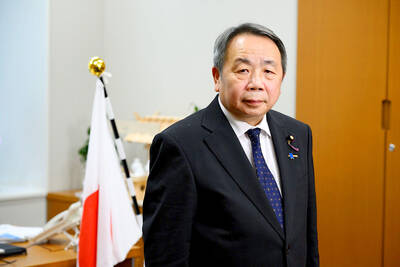A quasi-official organization founded last year to promote economic and cultural exchanges with Hong Kong is scheduled to hold its second joint meeting with its Hong Kong counterpart tomorrow, the Mainland Affairs Council (MAC) said yesterday.
Representatives of the -Taiwan-Hong Kong Economic and Cultural Co-operation Council (ECCC) will meet in Hong Kong with the Hong Kong--Taiwan Economic and Cultural Co--operation and Promotion Council (ECCPC), said the MAC, which oversees the ECCC.
REVIEW
During the one-day meeting, delegates are expected to review progress in economic and cultural cooperation over the past year and discuss cooperation in new areas for the coming year, the MAC said.
ECCC chairman Lin Chen-kuo (林振國) will lead the 20-member delegation, which will also include some of its advisers such as Sun Chen (孫震), an academic, and former vice chairwoman of the Chinese Nationalist Party (KMT) Lin Cheng-chih (林澄枝).
Also that day, the ECCC Economic Cooperation Committee will hold a Taiwan-Hong Kong economic and trade forum in Hong Kong, the MAC said.
The ECCC was established in May last year following Hong Kong’s establishment of the ECCPC two months earlier. Lee Yeh-kwong (李業廣) has since served as ECCPC chairman.
FIRST MEETING
The two intermediary bodies held their first joint meeting in Taipei on Aug. 30 last year.
During that meeting, the two sides decided to take turns hosting joint meetings at least once a year and convening additional gatherings whenever needed.
They established principles for communication and interaction between the two sides.
Mainland Affairs Council Minister Lai Shin-yuan (賴幸媛) and Hong Kong Secretary for Constitutional and Mainland Affairs Stephen Lam (林瑞麟) attended the first ECCC-ECCPC meeting in Taipei.
Hong Kong’s role as a transit hub for people and goods between Taiwan and China has been reduced as a result of warmer cross-strait ties since President Ma Ying-jeou (馬英九) took office in 2008.

A strong continental cold air mass is to bring pollutants to Taiwan from tomorrow, the Ministry of Environment said today, as it issued an “orange” air quality alert for most of the country. All of Taiwan except for Hualien and Taitung counties is to be under an “orange” air quality alert tomorrow, indicating air quality that is unhealthy for sensitive groups. In China, areas from Shandong to Shanghai have been enveloped in haze since Saturday, the ministry said in a news release. Yesterday, hourly concentrations of PM2.5 in these areas ranged from 65 to 160 micrograms per cubic meter (mg/m³), and pollutants were

Taiwan’s armed forces have established response protocols for a wide range of sudden contingencies, including the “Wan Chun Plan” to protect the head of state, the Ministry of Defense (MND) said today. After US President Donald Trump on Saturday launched a series of airstrikes in Venezuela and kidnapped Venezuelan President Nicolas Maduro, concerns have been raised as to whether China would launch a similar “decapitation strike” on Taiwan. The armed forces regularly coordinate with relevant agencies and practice drills to ensure preparedness for a wide range of scenarios, Vice Minister of National Defense Hsu Szu-chien (徐斯儉) told reporters before a

EVA Airways on Saturday said that it had suspended a pilot and opened an investigation after he allegedly lost his temper and punched the first officer several times as their plane was taxiing before takeoff at Los Angeles International Airport. According to a report published on Thursday by The Reporter, the incident occurred after the flight’s Malaysian first officer tried to warn the Taiwanese pilot, surnamed Wen (文), that he was taxiing faster than the speed limit of 30 knots (55.6kph). After alerting the pilot several times without response, the first officer manually applied the brakes in accordance with standard operating

Japanese Councilor Hei Seki (石平) on Wednesday said that he plans to visit Taiwan, saying that would “prove that Taiwan is an independent country and does not belong to China.” Seki, a member of the Japan Innovation Party, was born in Chengdu in China’s Sichuan Province and became a naturalized Japanese in 2007. He was elected to the House of Concilors last year. His views on the Chinese Communist Party (CCP) — espoused in a series of books on politics and history — prompted Beijing to sanction him, including barring Seki from traveling to China. Seki wrote on X that he intends